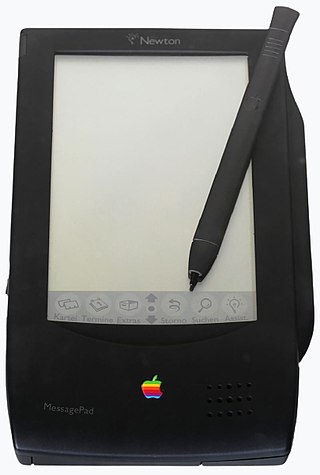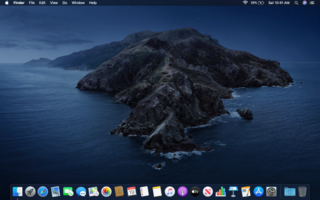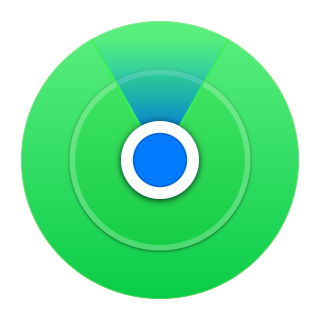Related Research Articles

The MessagePad is a discontinued series of personal digital assistant devices developed by Apple Computer for the Newton platform in 1993. Some electronic engineering and the manufacture of Apple's MessagePad devices was undertaken in Japan by Sharp. The devices are based on the ARM 610 RISC processor and all featured handwriting recognition software and were developed and marketed by Apple. The devices run Newton OS.

A personal digital assistant (PDA), also known as a handheld PC, is a variety mobile device which functions as a personal information manager. PDAs have been mostly displaced by the widespread adoption of highly capable smartphones, in particular those based on iOS and Android, seeing a rapid decline in use after 2007.

Handwriting recognition (HWR), also known as handwritten text recognition (HTR), is the ability of a computer to receive and interpret intelligible handwritten input from sources such as paper documents, photographs, touch-screens and other devices. The image of the written text may be sensed "off line" from a piece of paper by optical scanning or intelligent word recognition. Alternatively, the movements of the pen tip may be sensed "on line", for example by a pen-based computer screen surface, a generally easier task as there are more clues available. A handwriting recognition system handles formatting, performs correct segmentation into characters, and finds the most plausible words.

Graffiti is an essentially single-stroke shorthand handwriting recognition system used in PDAs based on the Palm OS. Graffiti was originally written by Palm, Inc. as the recognition system for GEOS-based devices such as HP's OmniGo 100 and 120 or the Magic Cap-line and was available as an alternate recognition system for the Apple Newton MessagePad, when NewtonOS 1.0 could not recognize handwriting very well. Graffiti also runs on the Windows Mobile platform, where it is called "Block Recognizer", and on the Symbian UIQ platform as the default recognizer and was available for Casio's Zoomer PDA.
iPhoto is a discontinued digital photograph manipulation software application developed by Apple Inc. It was included with every Mac computer from 2002 to 2015, when it was replaced with Apple's Photos application. Originally sold as part of the iLife suite of digital media management applications, iPhoto is able to import, organize, edit, print and share digital photos.

Apple Inc. uses a large variety of typefaces in its marketing, operating systems, and industrial design with each product cycle. These change throughout the years with Apple's change of style in their products. This is evident in the design and marketing of the company.

Newton OS is a discontinued operating system for the Apple Newton PDAs produced by Apple Computer, Inc. between 1993 and 1997. It was written entirely in C++ and trimmed to be low power consuming and use the available memory efficiently. Many applications were pre-installed in the ROM of the Newton to save on RAM and flash memory storage for user applications.

Larry Steven Yaeger is a former Apple Distinguished Scientist and Full Professor of Informatics at Indiana University Bloomington, currently employed at Google. Outside of academia he is best known for designing the handwriting recognition software used in the Apple Newton and Inkwell. Yaeger's academic research focused on the evolution of true artificial intelligence through natural selection. He is the lead developer of Polyworld.

Richard "Dick" Francis Lyon is an American inventor, scientist, and engineer. He is one of the two people who independently invented the first optical mouse devices in 1980. He has worked in signal processing and was a co-founder of Foveon, Inc., a digital camera and image sensor company.


Pen computing refers to any computer user-interface using a pen or stylus and tablet, over input devices such as a keyboard or a mouse.

The Newton is a series of personal digital assistants (PDAs) developed and marketed by Apple Computer, Inc. An early device in the PDA category, it was the first to feature handwriting recognition. Apple started developing the platform in 1987 and shipped the first devices in August 1993. Production officially ended on February 27, 1998. Newton devices ran on a proprietary operating system, Newton OS; examples include Apple's MessagePad series and the eMate 300, and other companies also released devices running on Newton OS. Most Newton devices were based on the ARM 610 RISC processor and all featured handwriting-based input.
The history of tablet computers and the associated special operating software is an example of pen computing technology, and thus the development of tablets has deep historical roots. The first patent for a system that recognized handwritten characters by analyzing the handwriting motion was granted in 1914. The first publicly demonstrated system using a tablet and handwriting recognition instead of a keyboard for working with a modern digital computer dates to 1956.

iPadOS is a mobile operating system developed by Apple Inc. for its iPad line of tablet computers. It was originally forked from iOS, the operating system used by Apple's iPhones, and given a new name to reflect the diverging features of the two product lines, particularly the iPad's multitasking capabilities. It was introduced as iPadOS 13 in 2019, reflecting its status as the successor to iOS 12 for the iPad, at the company's 2019 Worldwide Developers Conference. iPadOS was released to the public on September 24, 2019. The current public release is iPadOS 16.5, released on May 18, 2023.
The following outline of Apple Inc. is a topical guide to the products, history, retail stores, corporate acquisitions, and personnel under the purview of the American multinational corporation Apple Inc.

Notes is a notetaking app developed by Apple Inc. It is provided on their iOS, iPadOS and macOS operating systems, the latter starting with OS X Mountain Lion. It functions as a service for making short text notes, which can be synchronized between devices using Apple's iCloud service. The application uses a similar interface on iOS and macOS, with a non-textured paper background for notes and light yellow icons, suggesting pencil or crayon. Until 2013, both applications used a strongly skeuomorphic interface, with a lined, textured paper design; the Mountain Lion version placed this inside a leather folder. This design was replaced in OS X Mavericks and iOS 7.

Touch ID is an electronic fingerprint recognition feature designed and released by Apple Inc. that allows users to unlock devices, make purchases in the various Apple digital media stores, and authenticate Apple Pay online or in apps. It can also be used to lock and unlock password-protected notes on iPhone and iPad. Touch ID was first introduced in iPhones with 2013's iPhone 5S, In 2015, Apple introduced a faster second-generation Touch ID in the iPhone 6S; a year later in 2016, it made its laptop debut in the MacBook Pro integrated on the right side of the Touch Bar. Touch ID has been used on all iPads since the iPad Air 2 was introduced in 2014. In MacBooks, each user account can have up to three fingerprints, and a total of five fingerprints across the system. Fingerprint information is stored locally in a secure enclave on the Apple A7 and later chips, not in the cloud, a design choice intended to secure fingerprint information from users or malicious attackers.

macOS Catalina is the sixteenth major release of macOS, Apple Inc.'s desktop operating system for Macintosh computers. It is the successor to macOS Mojave and was announced at WWDC 2019 on June 3, 2019 and released to the public on October 7, 2019. Catalina is the first version of macOS to support only 64-bit applications and the first to include Activation Lock. It is also the last version of macOS to have the major version number of 10; its successor, Big Sur, released on November 12, 2020, is version 11. In order to increase web compatibility, Safari, Chromium and Firefox have frozen the OS in the user agent running in subsequent releases of macOS at 10.15.7 Catalina.

Find My is an asset tracking service made by Apple Inc. that enables users to track the location of iOS, iPadOS, macOS, watchOS devices, AirPods, AirTags and a number of supported third-party accessories through a connected iCloud account. Users can also share their GPS locations to others with Apple devices and view the location of others who choose to share their location. Find My was released alongside iOS 13 on September 19, 2019, merging the functions of the former Find My iPhone into a single app. On watchOS, Find My is separated into three different applications: Find Devices, Find People and Find Items.

Freeform is a digital whiteboarding application developed by Apple for macOS, iOS, and iPadOS devices, first revealed during the 2022 Worldwide Developers Conference, and officially launched on December 13, 2022, alongside iOS 16.2, iPadOS 16.2, and macOS 13.1. It allows users to create infinitely scaling canvases called "boards", which can display a range of inputs including text notes, photos, documents, and web links. There are also a variety of pen and brush tools available on the iOS and iPadOS versions of the software, letting users add sketches or handwriting to their boards similar to the tools available in the Notes app, which are compatible with the Apple Pencil.
References
- ↑ "iPadOS 14 introduces new features designed specifically for iPad". Apple. Retrieved June 22, 2020.
iPadOS 14 brings Scribble to iPad with Apple Pencil, allowing users to write in any text field — where it will automatically be converted to typed text
{{cite web}}: CS1 maint: url-status (link) - ↑ "Apple-Newton Handwriting Recognition". Larry Yaeger's Home Page. Indiana University. Archived from the original on July 17, 2012. Retrieved March 25, 2013.
Despite the abysmal recognition accuracy in the first generation Newton, most Newton afficianados or people interested in handwriting recognition will tell you that the second generation, "Print Recognizer" in Newton OS 2.x was a vast improvement, offering fast and surprisingly accurate recognition. Unlike the first generation software, this second generation recognition engine was developed in-house at Apple, in the Advanced Technology Group (ATG), later (and briefly) renamed the Apple Research Laboratories (ARL). I served as Technical Lead for the project, and together with a core team of three Apple engineers and two contractors, plus a host of other contributors (most of whom are listed in the slides mentioned below), we managed to produce what many have called the first genuinely usable handwriting recognition system. The technical papers, articles, and slides below document a lot of the key technological hurdles that were overcome and the innovations that were made in order to make this possible. The core recognition technology from the Newton has gained a new lease on life in the Jaguar release of Mac OS X (10.2). Together with a different team of engineers I have helped integrate handwriting recognition into Mac OS X in such a way that it just works with all existing apps; i.e., applications are not required to rev in order to support ink and the routine input of text by a pen and graphics tablet. This technology has been dubbed "Inkwell". (Partly it just seemed like a good name, plus I have a long-standing fondness for the Fleischer Brothers' animations, including their "Out of the Inkwell" series.) ... Though many people contributed to this effort, the core group consists of: Larry Yaeger, Technical Lead, ARL (nee ATG); Brandyn Webb, Contractor; Richard F. Lyon, Manager and Distinguished Scientist, ARL (nee ATG); Bill Stafford, Engineer, ARL (nee ATG); Les Vogel, Contractor
- ↑ "Apple Developer Documentation".